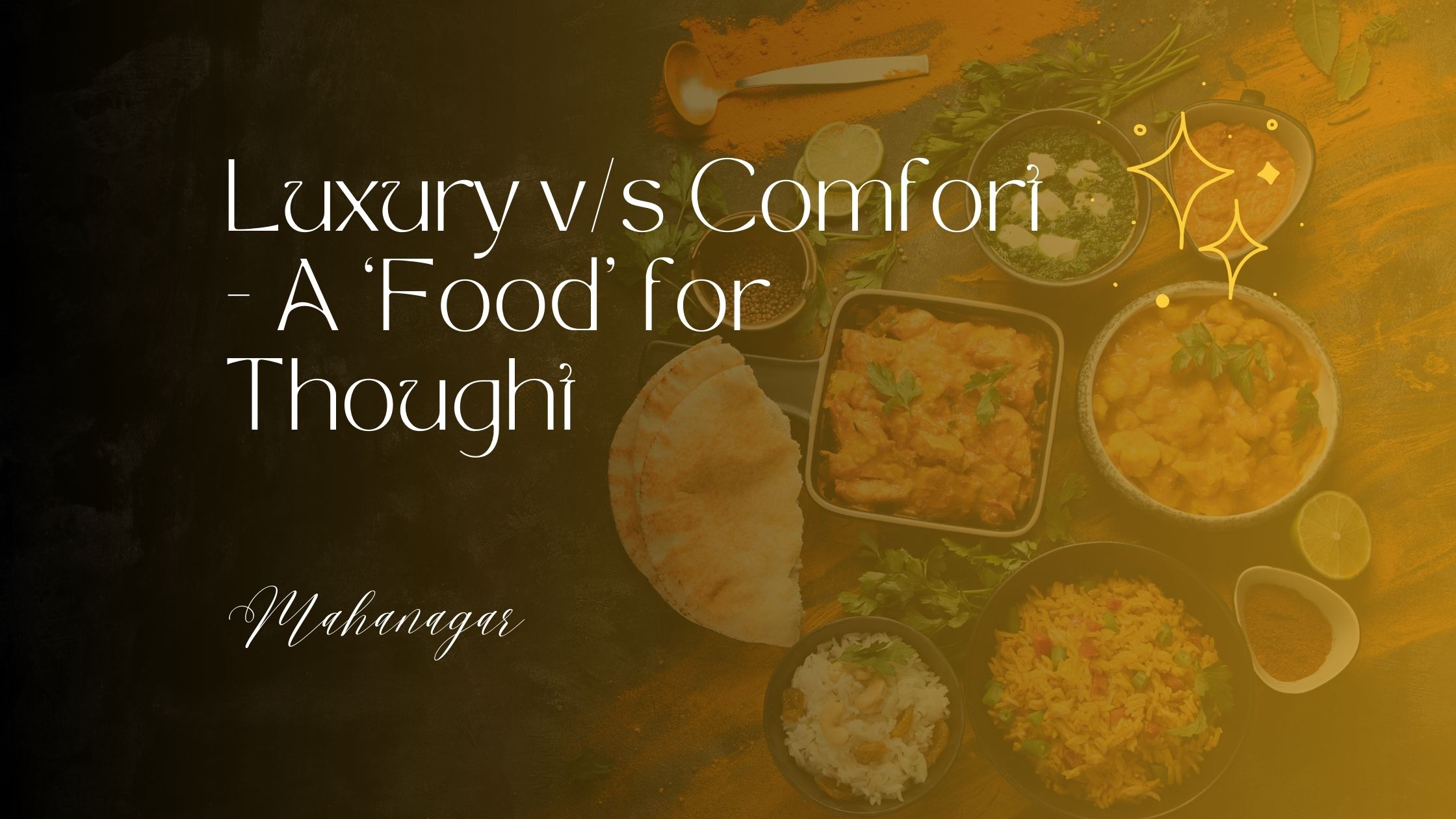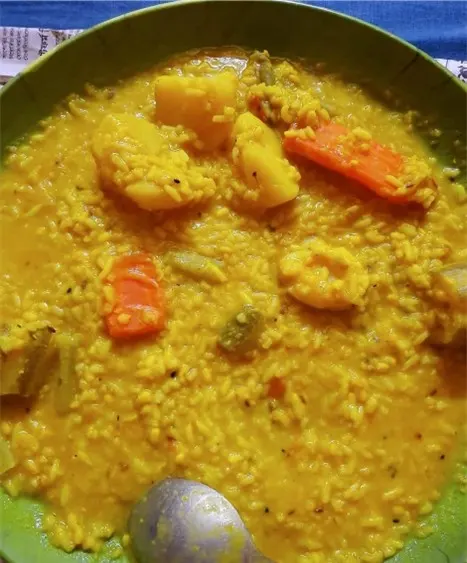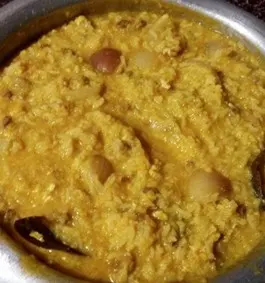Trending


Current Read









Enter your email address below and subscribe to our newsletter


In the culinary thriller The Menu (2022), the extremely symbolic climactic scene was knitted with sheer artistic brilliance. The conversation between the male protagonist, a rebellious psychopath culinary genius Chef Slowik (played by Ralph Fiennes); and the female protagonist Margot (played by Anya Taylor-Joy) holds the central theme of the movie. Exhausted and exasperated Margot – who makes a desperate last attempt to save herself and is a run-away from the morbid as well as dystopian Hawthorn restaurant – decides to trick Chef Slowik. She goes on to tell him that the dishes prepared by him lack ‘love’. Her appetite is hardly satiated by all those ‘showy’ foods, his foods ‘bored’ her and she is literally ‘starving’. She is then asked by the chef what she would like to have, and she opts for a cheeseburger – ‘a real cheeseburger, not some fancy, deconstructed avant bullshit’, a traditional one – medium with American cheese. Slowik understands her motive, prepares one for her, and then she leaves the island with her takeaway.
This scene is symbolic because it holds the true essence of the whole film, and the message it wishes to deliver vis-a-vis the protagonist, i.e. Chef Slowik, is conveyed properly. The movie targets the whole high-dining industry – industry in the sense a capitalistic one, which has evolved food into a commodity with a cultural status from food as solely an edible thing. Such culinary elitism brings to the table the politics of ‘other’, forks the ‘other’ almost to the extent of oblivion and gulps down the nuance that eating is.
That brings us to a rudimentary question – what is the purpose of food?
Well, for starters, the primary function of food is – drum rolls, to satiate hunger. One can be scientifically pedantic here and comment that the primary function of food is to aid in metabolism. What fuel is to an engine, food is to the body. We eat because that keeps us alive. While the function of subsistence cannot be denied as a matter of fact, we should also keep in mind another important aspect food – it provides comfort. By comfort, I do not mean the physical comfort only, but the one you get after filling your stomach after hours of starving. The comfort I am referring to here is mental comfort. Something that soothes you, eases your mind, places you on a tender lap and caresses your hair with a motherly affection.
Why do certain food items make us feel at home? Why is it that even a mere morsel of some specific foods can make us close our eyes in relaxation, slowly savour it as if it’s the last thing on Earth, shed our anxieties, and feel at ease? While it cannot be definitively asserted due to the presence of numerous influencing factors, we can safely conclude that certain foods carry memories attached to them.
Memories. A small trisyllabic word, albeit filled to the brim with possibilities, potential and warmth. The comfort of the winter sun, or a cup of steaming hot coffee on certain damp evenings, the coziness of longest slumber you’ve had in a while, the shimmer in your eyes when you see your best friend after long, or the last hug you have at an airport- The warmth of these petite moments tug at my heart. And quite like that, certain food items tie up all these emotions together in a close knot.
Here lies the dichotomy between comfort food and the aforementioned fine dining. Comfort foods, in stark contrast to avant-garde culinary delicacies, are simple – nothing extravagant, expensive, or difficult to pronounce, often bearing a French or Italian name. Often, they are the most basic dishes you can think of. Comfort is essentially synonymous with simplicity, while showy foods are associated with luxury, which can often lead to discomfort that we disguise under the guise of sophistication.
For me, there are two such food items that I find very dear to my heart, my kind of ‘comfort’ food. Without any surprise, both of them are home-cooked and sans any exception, by my mom. That too, adds to its comfort. These two items are – Khichudi (or Khichdi) and Paayesh (milk-rice). Below I will be discussing them in brief.

Imagine it’s a rainy evening, pouring cats and dogs outside. If you ask any Bengali what they would love to have for dinner, they will almost invariably say, “Khichudi aar Ilish Machh Bhaaja” (Khichdi with fried Hilsa). But the role of khichudi extends far beyond just being a rainy-day indulgence. Feeling unwell? Bedridden with a bad fever? Don’t worry—steaming khichudi comes to the rescue. Too lazy to cook a full meal? Once again, khichudi saves the day.
Who would have thought that a simple combination of pulses and rice in a 2:1 ratio could be so easy to cook, yet so flavourful, filling, and delicious? And that’s not all – you can prepare khichudi with a variety of ingredients, in numerous ways, using different types of pulses, rice, and even varying amounts of water. Khichudi opens up a world of culinary possibilities for those who cook with heart and imagination.
My mom is one such person who has elevated the art of making khichdi to near perfection. She inherited this skill from her father, my maternal grandfather. Name any kind of khichdi, and she can whip it up effortlessly. Bhuni (dry and grainy) khichudi with mutton keema? Check. Khichudi with winter vegetables? Check. Thick khichuri made with moong dal and Gobindabhog chaal (a specific short-grained rice with a GI tag from West Bengal)—the type served as offerings to gods during pujas (bhoger khichuri)? Check. Or even the thin, soupy khichudi made with mushur dal (red lentils) and plain rice, perfect for a feverish patient? She’s a master of them all.
Her experiments with khichudi ensure we never eat the same version twice. Whenever I’m in a bad mood or not in the mood for an elaborate dinner, I signal to her, and in no time, she’s in the kitchen, preparing khichudi. I usually stand by her, offering to help and chatting away while she works her magic.
Perhaps it’s for all these heartfelt memories that khichudi—despite being one of the simplest dishes in Bengali cuisine—never fails to comfort me. No wonder it tops my list of comfort foods.


Before globalization made its colonial and capitalist inroads into our otherwise unique and distinct cultural landscapes, we had our own ways of celebrating life. We weren’t familiar with global fast-food chains, yet our meals were joyful. We didn’t know about the 51 flavours of a certain ice cream brand, but we were content with cheap popsicles that, according to our parents, were probably made from sewage water. Similarly, cutting cakes as part of birthday celebrations was once an alien concept in Bengali households. Instead of cakes, we had our very own paayesh (the Bengali version of rice pudding), lovingly prepared by a motherly figure.
Perhaps this is why birthday cakes have never really appealed to me. Yes, I appreciate the gesture and the warmth, but the affection present in a small borosilicate glass bowl of paayesh prepared by my maa is truly unmatched. Like khichudi, she is a pro at making paayesh, but there is one difference—she doesn’t experiment with it. Every single year on my birthday, she prepares the same paayesh with an extravagant number of cashews and raisins.
She has an impeccable sense of balance when it comes to paayesh—neither too sweet nor too bland, but just the perfect level of sweetness to savour every spoonful. She lets the milk boil for an incredibly long time until it thickens to a consistency almost like kheer. A single spoonful is enough to make you close your eyes and relish the taste. To me, it feels as though her love for her gourmet son thickens into the form of paayesh.
No other dessert in the world can make me feel as loved or as comforted as the paayesh she prepares for me, year after year, without fail—a heartfelt ritual that has become the sweetest part of my birthdays.
Hence, we can safely conclude that no matter how basic a food is – if it comforts one, then it is the best food. And, as we all know, the only way to the heart is through the stomach. Likewise, in the case of comfort foods, for me at least, this remains to be the sine qua non of my life.

Archisman Ghosh is a part-time writer and a full-time procrastinator. Also, a foodie and fountain-pen connoisseur. After completing his academic education with a degree in Bengali Language and Literature from Presidency University, he currently works as a journalist at the Statesman Group. He can be found experimenting with coffee, pens and inks whenever he is not writing, reading a book or sleeping.